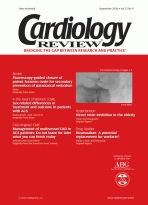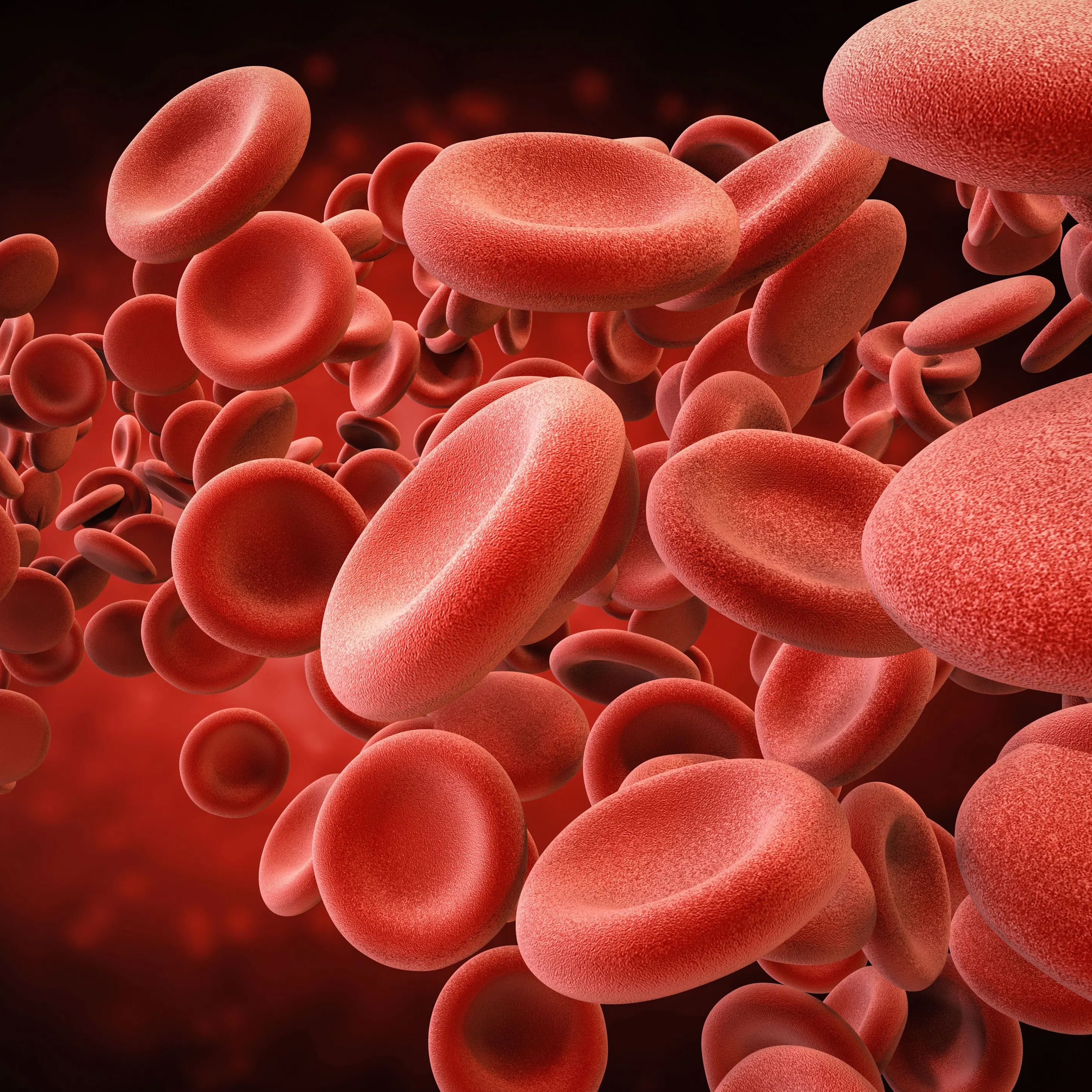Publication
Article
Cardiology Review® Online
Large-scale clinical epidemiology of stable angina in women and men
Author(s):
We performed a whole-country study using linked health care records in Finland and showed that stable angina as the initial symptomatic manifestation of coronary disease occurs as frequently in women as it does in men. Among easily recognized subgroups, the absolute rates of prognostic outcomes were similarly high in women and men.
“Readers wishing to see the figures for this paper should consult the print version.”
The population burden of stable angina pectoris is not well understood, especially in women. Major population studies of women have concentrated on fatal coronary disease or acute coronary syndromes.1 However, coronary heart disease is the most frequent cause of death, and stable angina is the most common initial symptom in women.2
Existing studies of angina suggest a paradox, showing similar prevalence in women and men,3,4 contrasting with the pervasive occurrence of myocardial infarction (MI)5 and narrowed arteries at angiography6 in men. Population studies that might shed light on this apparent contradiction have been limited (eg, by recruiting and following up small numbers of angina patients over decades) or have not been done—there have been no surveillance programs of angina incidence and prognosis.
Our goal was to assess the differences between men and women with chronic stable angina regarding the incidence in the general population, the mortality rate due to coronary disease compared with the general population, and the absolute coronary event rates by coexisting conditions and angina severity.
Subjects and methods
The population of Finland was chosen for study, as the national registers of health care enable linking of census, primary care, hospital care, and cause of death records of individuals. The denominator population comprised the resident Finnish population aged 45 to 89 years in 1996, according to the 1990 census. The census provided data on age, sex, educational level, and marital status.
Cases of incident angina uncomplicated by previous MI or unstable angina were identified according to 2 mutually exclusive case definitions. All subjects were selected on the basis of records of reimbursement of medication charges from January 1, 1996, to December 31, 1998, as retained by the Social Insurance Institution. The first group (“nitrate angina”) included those subjects who were reimbursed for dispensed prescriptions for isosorbide mononitrate (Imdur, Ismo, Monoket), isosorbide dinitrate (Dilatrate-SR, Isochron, Isordil), and nitroglycerin (Nitro-Bid, Nitro-Dur, Nitrostat), excluding those who had taken nitrate medication within the previous 12 months. The second group (“test-positive angina”) included those who had received a special reimbursement right requiring a medical certificate, following review by a specialist physician. These subjects had symptoms of chronic angina pectoris that responded to antianginal medication in the presence of coronary disease as shown on angiography or unequivocal electrocardiographic changes. Prescription reimbursement records were also used to ascertain the daily dose of medication, which was an indication of the severity of the disease.
Records of patient death were identified from the Causes of Death Register at Statistics Finland. Deaths from coronary heart disease were defined according to International Classification of Diseases, 10th Revision, Clinical Modification codes I20-I25, and 7906 coronary deaths were identified until the end of 2001, with a median follow-up period of 4 years. Other details obtained from the hospital discharge register included data regarding nonfatal MI, percutaneous coronary intervention, and coronary artery bypass graft surgery.
Results
The overall (nitrate plus test-positive cases) incidence of angina was high, 1.89 per 100 per year for women and 2.03 for men. Age-standardized total incidence risks were similar, with a male vs female sex ratio of 1.07 (95% confidence interval, 1.06-1.09). Our results showed that the annual incidence of nitrate angina was higher in women than in men (Figure 1, top panel). Test-positive angina, however, showed a reverse pattern, with the difference being particularly marked in the youngest age group of 45 to 54 years of age (Figure 1, bottom panel). As age increased, the incidence of nitrate angina also increased, whereas for test-positive angina, this effect lessened in subjects older than 75 years of age.
Standardized mortality rates (SMRs) represent the ratio of observed to expected deaths, the latter being calculated from age, sex, and calendar year-specific coronary mortality rates from the total Finnish population. In the nitrate angina group, women in every age group showed increased SMRs of a similar magnitude as those recorded in male subjects (Figure 2, top panel). In cases of test-positive angina, however, women aged 45 to 74 years had higher coronary SMRs than did men (Figure 2, bottom panel).
The absolute rates of MI (fatal and nonfatal) were generally lower for women than for men, but these associations were modified by clinical covariates. There was a clear graded association between the amount of nitrates used and coronary event rates in both male and female nitrate angina cases, after adjusting for receipt of coronary revascularization, cardiovascular and noncardiovascular conditions, and demographic factors. However, the prognosis for women taking higher doses of nitrates was similar to that for men. In age-adjusted analyses, women were more likely to be using nitrates (such as nitroglycerin) and at lower defined daily doses.
There was a strong correlation between diabetes and coronary event rates, with no difference between the sexes among test-positive angina subjects and little difference among nitrate angina subjects. Those subjects with diabetes and test-positive angina showed age-standardized event rates of 9.9 per 100 person-years in women and 9.3 per 100 person-years in men. In test-positive angina subjects, individuals with 2 or more coexisting noncardiovascular conditions showed no prognostic difference between the sexes. Factors that portended coronary events also were likely to portend death from all causes.
Discussion
As far as we know, our study is the first study of this size to evaluate angina as the first symptom of coronary disease. Using existing unselected patients in primary care, results showed that there were no significant differences in the overall occurrence of angina between men and women. Compared with women in the general population, women with angina had an increased incidence of coronary mortality. In some clinical subgroups, the absolute rates of prognostic outcomes were similarly high in women and men.
New-onset angina was very common, with approximately 5 times the incidence risk of hospital admission for MI in Finland. Because not all cases of angina are diagnosed and treated7 (especially in women) and of those patients treated, not all receive nitrate treatment and some may not seek reimbursement, our estimates for angina incidence may, in fact, be conservative. Furthermore, most estimates of MI incidence are inflated estimates of the first manifestation of coronary disease because they take no, or limited, account of preceding stable angina.
In line with our systematic review of population-based studies that used the standardized Rose questionnaire to identify the prevalence of typical angina symptoms,8 our study showed a total incidence of angina in women that was not significantly different from the incidence in men. These 2 separate lines of evidence are likely to be robust, as the questionnaire method is free of diagnostic and treatment biases, whereas the clinical cases reported here are free of instrument and reporting biases. The prospective clinical validity of the nitrate cases reported here is shown by the significantly increased risk of coronary mortality compared with women in the general population. The effect was similar in magnitude to that found in men.
Test-positive cases were identified more frequently in men than in women, which is consistent with previous findings that suggest that investigation of women with chest pain is underemployed. This finding may be attributable to sex differences in description of symptoms9 or different physician perceptions of risk according to patient sex. It was also notable that these selected women had especially high sex-specific coronary SMRs, exceeding those of men, up to 75 years of age. This may be the result of a number of factors, including undertreatment, selection of sicker patients, and lower absolute rates in the general population of coronary heart disease mortality.
Coronary revascularization was carried out more frequently in men than in women, although this did not affect coronary event rates. We did, however, identify a stepwise association between the number of filled nitrate prescriptions over the year of incidence and subsequent coronary events. This suggests that the amount of nitrates used may be a marker of symptom severity, which is known to relate to prognosis.10 Overall, women more often had lower coronary event rates than men, although this advantage was not shown in clinical subgroups in which comorbidities, such as diabetes, were present.
initial
Differences in the nature and severity of the underlying cardiac pathophysiology of angina between men and women may possibly explain the prognostic differences between the sexes. Additional studies are required to differentiate between patients with nitrate angina who had never been investigated and those who tested negative using the conventional assessment methods of noninvasive ischemic testing or coronary angiography. Randomized trials of angina have usually failed to reflect the population burden of angina by selecting a far greater number of men than women, thus maintaining the erroneous perception that “real” angina is chiefly a male condition. Prior studies have also failed to investigate the incidence of angina as an symptom of coronary heart disease. Most patients in previous trials have had prior MI or have survived for several years after initial presentation.
Conclusion
The results of our study show that women have the same high incidence and mortality burden of stable angina as men. Additional studies are needed to elucidate the biological mechanisms of the angina-sex paradox and to ensure appropriate access to investigation and treatment services.






